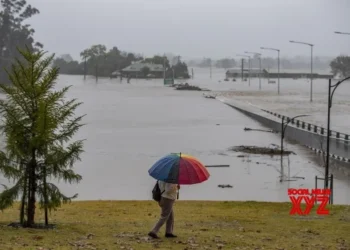Green hydrogen is a buzzword today with not just the government but even private entrepreneurs investing in R&D to make it cheaper. Green hydrogen, part of the renewable energy basket, is the proverbial new kid on the block that can take a place of pride sooner than expected.
However, right now, the main worry for the government planners is its cost to make it commercially viable.
The International Solar Alliance (ISA) and the National Dairy Development Board (NDDB) are working on an innovative concept, which, as and when materialises, will not just bring down the cost of production of green hydrogen but also helps utilise the tonnes of daily cow dung generated by a dairy near Varanasi — Prime Minister Narendra Modi’s constituency — on a daily basis.
It is a dairy that is now being run by the NDDB, an agency under the Department of Animal Husbandry and Dairying, part of the Ministry of Fisheries, Animal Husbandry and Dairying.
Output expected from the biogas plant are electrical energy, which will also help generate thermal energy and will be used for cooling the boilers of the milk plant, and the bio-fertiliser, which will be sold back to the farmers at a designated rate.
“The economics worked out showed that use of a combination of thermal and electrical energy from the biogas led to a savings of Rs 0.40 per litre. Add to it, the income generated by selling the bio-fertilizer. Over and above that, the NDDB also plans to encash the carbon credits to gain additional revenue,” said Atul Chaturvedi, Secretary, Department of Animal Husbandry and Dairying.
Now, the officials are thinking of a hybrid model that makes use of solar energy during the day and biogas during the night to produce green hydrogen, a first of its kind model.
Earlier this week, the department had organised a meeting to discuss opportunities, operational challenges and solutions to set the stage for mass production of green hydrogen from biogas produced from cow dung at an affordable price. Apart from the officials from the ISA and NDDB, the meeting was attended by representatives of ministries of petroleum, fertiliser, renewable energy.
“During the meeting, Dr Ajay Mathur, director general of ISA, gave an extensive presentation on solutions to generate green hydrogen,” said a top official.
However, it is just at the planning stage and the actual production stage is far away but the government officials are optimistic.
MNRE will fund the project under its scheme of funding project for green hydrogen. It is now up to the ISA and NDDB to work out details with ISA taking the lead.
“If this model works out fine, it will not just be a first-of-its kind model across the world but will create a huge potential for countries like us,” Chaturvedi added.






















